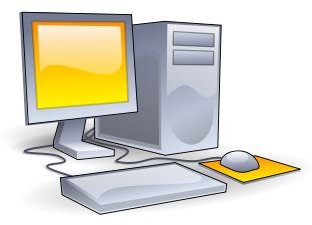Portable VMware Player: Can it be Done? And Why Bother?
The Power of Portable Apps
Application portability is a problem, especially when licensing considerations are at play. After all, some people use multiple computers
on a regular basis (some of them may be publicly accessible) and cannot legally or practically install their applications on each one of them.
Portable Apps is one of the leading Internet sites dedicated to techniques for creating and distributing portable applications that reside entirely on portable media such as a USB flash drive, external hard drive, or a CD ROM or DVD ROM disk.
By locating all the files an application needs on a removable drive, users can transport their applications with them wherever they go and have the same settings and options available to them even when the applications are not installed on the host machine.
Although the concept of a portable application sounds simple, significant changes to the way an application operates is often required. This is especially true regarding Windows applications because they are notorious for creating numerous registry hives and loading many dll, ini, and other supporting files on the host’s hard drive to facilitate their operation. A portable application will make no changes to the host machine, meaning that all the file resources required to run it must be contained on the portable drive or disk.
Image Credit: Wikimedia Commons/Msgj
About VMware Player
VMware Player is a free application that users can download from the VMware Web site. This application allows users to run VMware compatible virtual machines. This technology enables users to run multiple operating systems within their Linux or Windows environment and isolate applications from their host system. For example, a Windows machine with VMware Player installed could run a virtual computer equipped with an operating system from Apple.
Another use for VMware Player could be to segregate Web browser activity from the local machine to guard against virus and malware infection.
A Portable VMWare Player
Creating an official distributable portable VMware player may be problematic from a licensing or intellectual property standpoint, so be sure to check your compliance before attempting to create a portable VMware player.
Another thing to consider about creating a portable VMware Player is the number of .dll and .exe files, registry entries, and virtual drivers that the program requires to be loaded on the local machine. Because of this, solutions such as the VMware ThinApp solution will not work.
Because of the requirements of the VMware Player, the best chance of creating a portable version of the application is to load it as part of a “live” CD, external hard drive, or flash drive that loads a version of Linux (such as Knoppix) or Windows (such as Windows PE). This way, the VMware Player has access to a portable registry and hardware resources without accessing the operating system on the host machine.
Conclusion
Though intriguing, the concept of a portable VMware Player application is one that has little benefit, especially for the effort required to make it possible. Even if a bootable “live” CD ROM or external hard drive was fitted with VMware Player, the possibility exists that hardware differences between host machines would render the application inoperable. Also, the speed of the virtual machine running under the portable VMware Player would likely be impaired, especially when run from CD ROM or flash media.
VMware appliances and virtual machines will probably work better if the VMware Player application is installed directly on the host computer. This will work only for cases where sufficient access rights are available for the user. Virtual machine images can then be easily transported on portable media, allowing users access to personalized environments on multiple machines.
Users wishing to have a truly portable player together with their virtual machines on portable media should consider trying alternative solutions such as Virtual Box or QEMU that may be more conducive to the concept of portability.
